
Discover more at Cliveden
Find out when Cliveden is open, how to get here, the things to see and do and more.
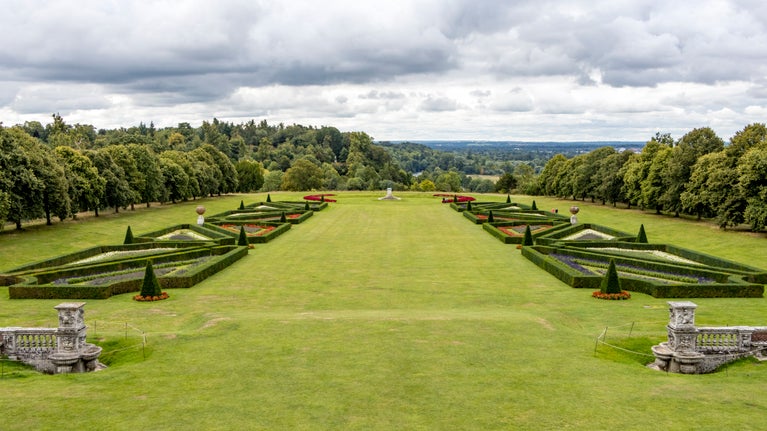
Cliveden is an extraordinary estate shaped by a succession of remarkable people including, Dukes, Princes and the first woman MP to take her seat in the Houses of Parliament. Home to one of the National Trust’s most significant sculpture collections, Cliveden has been a focus for entertaining, controversy and political intrigue for over 350 years.
The estate of Cliveden was created during the early 13th century following the division of landowner Stephen de Cliveden’s holdings in Taplow, Buckinghamshire. In 1538 the antiquary John Leland described the Cliveden estate as ‘…a cliffy ground hanging over the Tamise, and some busschis growing on it’. By the mid-1500s, the estate, whose name means ‘valley amongst cliffs’, amounted to two lodges and about 160 acres of land.
George Villiers, 2ndDuke of Buckingham (1628–87) purchased the estate in the late 1660s. In the 1670s he appointed architect Captain William Winde to build a house to entertain notable political figures, friends and principally Anna Brudnell, Countess of Shrewsbury (1642–1702) with whom he was having an affair.
The house, with its remarkable prospect above the River Thames, inspired diarist John Evelyn to observe ‘That stupendous natural rock.... and building of extraordinary expense.’ Significant earth works were required to create the 400-foot platform to the south of the mansion on which the South Terrace was constructed. Today, the terrace is the only architectural element that remains of Buckingham’s original house.
Buckingham was a member of the Cabal ministry, a private group of high councillors who advised Charles II. He inherited a significant fortune from his father and owned several estates. He purchased the Vauxhall glass factory in the 1660s and was a principal investor in the The Royal African Company, a mercantile company founded to trade in enslaved people, gold and silver in West Africa.

In 1706, Lord George Hamilton, Earl of Orkney (1666–1737) purchased Cliveden, creating an association with the Orkney family which lasted over a century. Hamilton was a prominent military figure who served as second in command to the Duke of Marlborough at the Battle of Blenheim in 1704. He was also, despite never visiting, issued a patent as Governor of Virginia in America from 1710 until 1737.
Hamilton undertook extensive landscaping work including the creation of his ‘Quaker Parterre’, so described because of its simple yet noble appearance. He enlisted architect Giacomo Leoni to design the Blenheim Pavilion and Octagon Temple Garden buildings with other notable commissions including the building of two flanking wings to the mansion designed by Thomas Archer and the involvement of pioneering garden designer Charles Bridgeman in the garden layout.
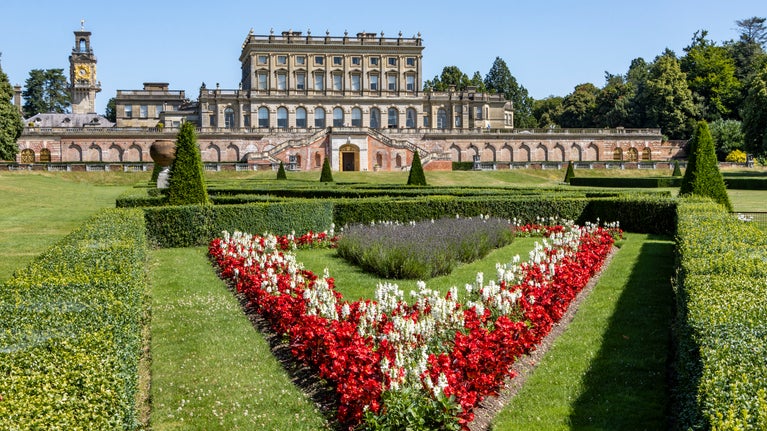
In 1737, Anne, Countess of Orkney (1696–1756) inherited the Cliveden and Taplow estates. Between 1737–51 she leased Cliveden to Frederick, Prince of Wales (1707–51), son of King George II and Caroline of Ansbach.
Frederick used Cliveden as an informal royal court to rival that of his parents. He fostered a circle of artistic, scientific and musical expression which reached its height in 1740 with the first public performance of the song ‘Rule Britannia’ written by James Thomson and David Mallet. It has often been claimed that Frederick, who was a great fan and patron of cricket, died after being struck by a cricket ball at Cliveden. Although unlikely, this suggestion has long linked the prince with the sport.
On the night of 20 May 1795, a fire ravaged Cliveden’s main building, leaving only the wings standing. It was nearly three decades later, when Sir George Warrender (1782–1849), MP and heir to a sizeable Edinburgh trading fortune, purchased the estate. In 1827 Warrender commissioned architect William Burn to design a new mansion on the existing foundations of Winde’s original building. The house remained until November 1849 when a second and even more devastating fire overwhelmed the mansion.
George, the 2nd Duke of Sutherland (1786–1861) and his wife Lady Harriet (1806–68) had purchased the estate just nine months before the fire. Faced with having to entirely rebuild the mansion, they commissioned Charles Barry who had worked for them at their estates in Staffordshire and Scotland. The Sutherlands also employed architect George Devey to design several estate cottages in his distinctive vernacular style and horticulturalist John Fleming to create the innovative planting beds on the parterre.
The Sutherlands’ vast wealth came from significant land holdings in Scotland. As a family, they are remembered for their controversial role in the Highland Clearances of the 18th nd 19th centuries which saw tenants moved from Highland settlements to the coast.
Harriet, Duchess of Sutherland was an enthusiastic proponent of the anti-slavery movement and provided patronage to Harriet Beecher Stowe, the American author of ‘Uncle Tom’s Cabin’. The Duchess also hosted a meeting at Stafford House, her London mansion, where she petitioned her ‘sisters’ in the United States against slavery.
Following the Duchess of Sutherland’s death in 1869, Cliveden was sold to her son-in-law, Hugh Lupus Grosvenor, Duke of Westminster (1825–99). Westminster was a landowner, politician and founding Chairman of the National Trust. He made few changes to the grounds but continued to employ Devey and Henry Clutton to improve the estate buildings and properties.
In 1893, the American millionaire, William Waldorf Astor (1848–1919) purchased Cliveden for $1.3 million. William was born into the incredibly wealthy Astor family who had made their money in fur trading and real estate. He set about significant internal alterations in the house, working with father and son architects, John and Frank Loughbrough Pearson. With his vast wealth William created the Long Garden and the East Asian-inspired Water Garden. He populated Cliveden’s grounds with a remarkable collection of classical and Renaissance sculpture. His collecting reached its zenith when he installed at Cliveden an entire 18th century interior from the Chateau d’Asnieres in France.
The estate and its history fascinated William to such an extent that he wrote a series of short stories set amongst what he called the ‘greensward’ of 17th-century Cliefden’.
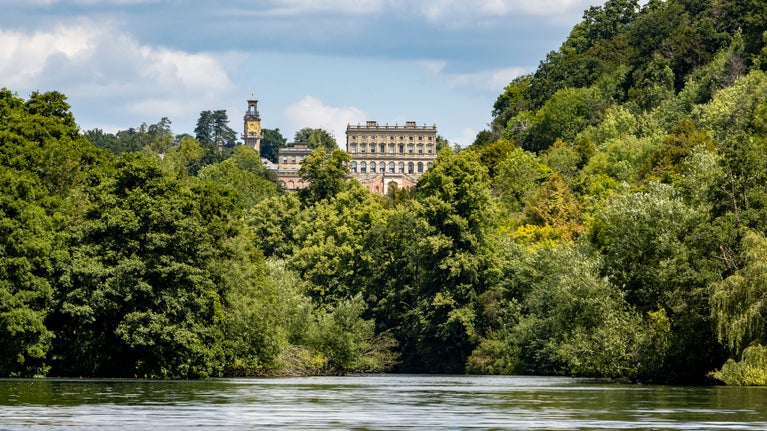
William gave the estate to his eldest son Waldorf (1879–1952) as a wedding gift following his marriage to Nancy Witcher Langhorne (1879–1964) in 1906. American-born Nancy Astor became a major figure in British politics and the first woman to take her seat in the Houses of Parliament in 1919. She made Cliveden a centre for political and literary gatherings. Guests included playwrights and actors as well as figures from across the political spectrum. These gatherings were not without controversy, as Cliveden became synonymous with its ‘set’ and its attempts, suggested by some, to appease Germany in the run up to the Second World War.
During the First and Second World Wars Cliveden was home to a Canadian Red Cross Hospital which looked after tens of thousands of troops. The small number of soldiers and nursing staff who died at Cliveden are buried in the memorial garden which became an official Commonwealth War Graves Cemetery.
Following the lead of their friend, Philip Kerr, 11th Marquis of Lothian of Blickling, the Astors decided to leave Cliveden to the National Trust in 1942, although they continued to live in the house until the 1960s.
In 1961, Secretary of State for War, John Profumo, met model and dancer, Christine Keeler, at Cliveden. The ensuing scandal, known as the Profumo affair, had a devastating effect on the Astor family. They eventually left Cliveden in 1966, with the National Trust leasing the estate to Stanford University as an oversees campus from 1969 until 1983. From the late 1980s until today, the house has been operated as a luxury hotel.
Today the estate welcomes over half a million visitors a year to the Grade I listed mansion, gardens and parkland. In recent years significant conservation projects have included the restoration or the South Terrace and Long Garden, as well as John Singer Sargent’s portrait of Nancy Astor. In 2025, a project to restore and conserve one of Cliveden’s most iconic collection items, the Borghese Balustrade, has begun.

Find out when Cliveden is open, how to get here, the things to see and do and more.
Take a guided tour of Cliveden house – now a luxury hotel – and visit the chapel, final resting place of three generations of Astor family.
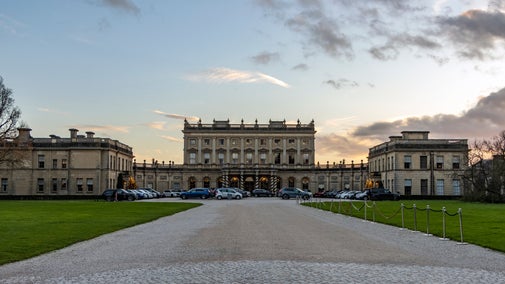
Follow in the footsteps of dukes, earls, kings and queens as you stroll through a series of impressive spaces at Cliveden this winter, each with its own special charm.
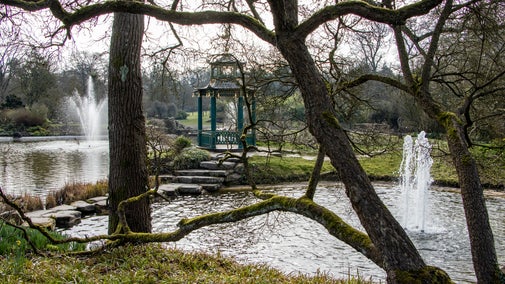
Cliveden has many sculptures in its grounds, including ancient baboons and bold choices of ‘new art’ sculpture from Cliveden’s 19th-century owners.
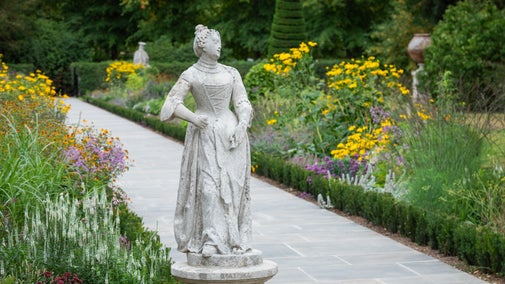
Discover the background and history of some of the main features in the garden at Cliveden and who was responsible for commissioning and designing them.

Learn about George Villiers, 2nd Duke of Buckingham, a powerful courtier and politician during the reign of Charles II.

From landscape gardeners to LGBTQ+ campaigners and suffragettes to famous writers, many people have had their impact on the places we care for. Discover their stories and the lasting legacies they’ve left behind.

Learn about people from the past, discover remarkable works of art and brush up on your knowledge of architecture and gardens.

Explore the objects and works of art we care for at Cliveden on the National Trust Collections website.
